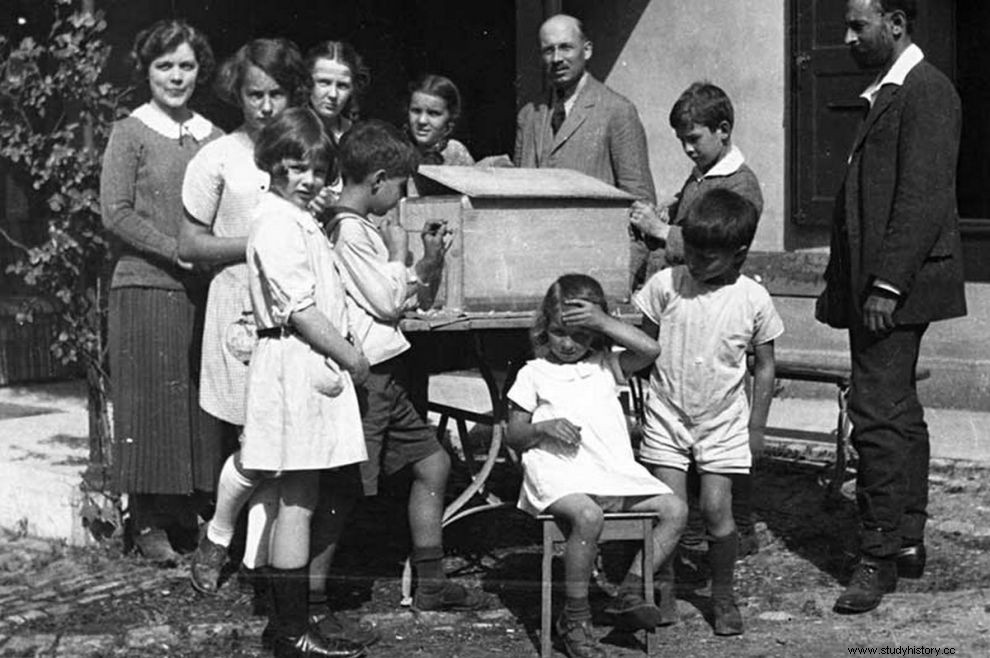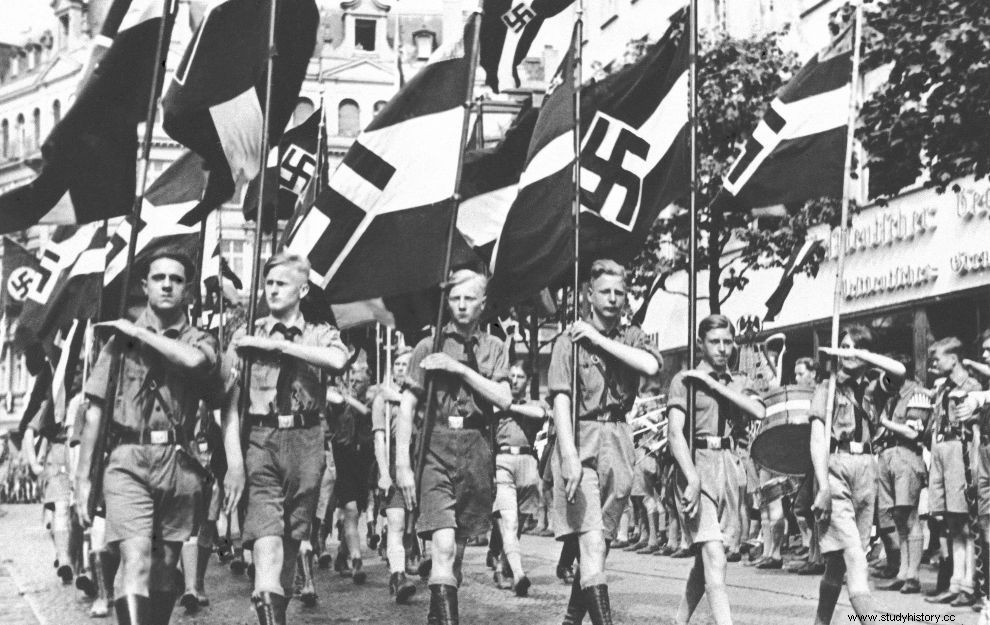The planet was alive in 1926, when the École Internationale de Genève thought - in its second year of operation - that it would be interesting to meet children from different countries in the same educational system and educational space, with the aim of getting to know each other better - independently from the culture in which they were growing up until then - and to arrive together at a peaceful and respectful dialogue.
Note:Ecolint is the oldest international school on the planet and the largest with the word 'international' in its name.
This school was established to serve the League of Nations (see first world intergovernmental organization whose mission was to maintain world peace) and the first and oldest specialized agency of the UN to promote social and economic justice - through designated international labor standards - the International Labor Organization.

The experiment failed, as the different languages did not allow communication in the antamoma, with the consequence that they composed their own groups of the same languages, in all school activities. Problem that was never fixed.
After World War II the same school made a second attempt, in collaboration with the United Nations International School of New York to follow suit. Together they created the International Baccalaureate Organization.
This time, all the children took every lesson in the same language - and every lesson was taught in a different language. For example, science was taught in English, mathematics in German, history in French and so on. To graduate, a child had to be fluent in at least two languages. Most knew 4 to 5 adequately, at a business level. Also, everyone was together in the teams playing various sports and playing in the yard. Fast forward to today, many high-ranking embassies and business executives are graduates of the International Baccalaureate Organization.
You could say that the thought of the École Internationale de Genève was also a way to fight xenophobia, along with one of its consequences:the Paris Syndrome. The syndrome, which is considered a serious form of culture shock, arose from the feeling of disappointment experienced by many of those who went - and still go - to Paris and see that it was not what they expected. Originally they were mainly Asians. As a syndrome, it is associated with a series of psychiatric symptoms, such as acute delusional states, hallucinations, feelings of persecution (perception of being a victim of prejudice, aggression and hostility from others), depersonalization, anxiety and also psychosomatic manifestations such as dizziness, tachycardia, sweating and others, such as vomiting.

As Helen Roche, Associate Professor of Modern History of European Culture at Durham University, wrote in the Conversation, what emerged as a means to defeat racism was used by the Nazis for other - apparently not positive - purposes. She herself has written a book about the elite schools of the Third Reich.
In the summer of 1935, the Nazi government seized a student exchange program between leading American and German schools in what became known as the International Schoolboy Fellowship.
It had been 'set up' since 1927 by Walter Huston Lillard, director of Tabor Academy in Massachusetts. He had thought that the exchange of students could promote better relations between nations. The countries that participated in the program were the USA, Germany, France and Great Britain. As Lillard had said "it is a given that misunderstandings and disputes between nations often arise from misunderstandings arising from distance", before adding that "developing contacts can create cordial relationships and lasting friendships".
Little did he know
By 1935 Third Reich officials in charge of the country's new leading schools (Nationalpolitische Erziehungsanstalten - National Institutes of Political Education and for Napola friends) had completed the plan that put them on the student exchange program. It goes without saying that their own goal was not to create "cordial relations", but to promote the ideas of the National Socialists.
They copied and pasted the method that they believed would lead them to success, from ancient Sparta and the way the public schools of Great Britain operated. Boys aged between 10 and 19 participated in the program, who were being trained "to become future leaders". The New York Times had published (on 10/2/1933) a related article, informing that there were also scholarships available for young people who wanted to promote cooperation between the US and other countries.
There had been a meeting of the country's top institutions (Harvard, Kent School and Lilland - who was the president), where the request to welcome 10 of Napola's children to the US and to send as many more was passed. The trip took place in December 1935. Three years later 18 American schools participated in the student exchange program. Between 1936 and 1938, 15 American students attended the elite Nazi schools each year for 10 months, and 30 Napolas students spent five months at the American schools.
The first exchange involved Reinhard Pfundtner, the son of a high-ranking official in the Third Reich's Ministry of the Interior. His participation ensured the effectiveness of the mission which was to counter and neutralize the effect of anti-Nazi reporting in the American media and to influence the public's positive view of the Third Reich.
The 17-year-old's father, Hans, was one of the main initiators of the Nuremberg Laws - which demoted Jews and gypsies to pariahs. He had also played a decisive role in the arrest of the Holocaust, while he was also a member of the Olympic Committee. He had told his son that his job was to convince Lilland to do everything he could to get the US into the 1936 Olympics in Germany. There are documents proving that Reinhard Pfundtner did his job and convinced Lilland that all he was interested in was establishing a selfless friendship.
Even after the Kristallnacht (Night of Crystals) mass nationwide pogrom that took place on the night of November 9-10, 1938 (more than 7,000 Jewish businesses and more than 250 synagogues were destroyed in what was the beginning of the Holocaust), the Lillard urged school principals to continue the program for the 1939-40 academic year. In his letter he had emphasized that "if we continue to bring the boys together, something constructive can be achieved. If we abandon the efforts, we will deprive future leaders of the opportunity to open their minds".
By the way, for what happened on Kristallnacht, Napola's students explained that "it is an attempt to defame and Jewish propaganda". They emphasized that it had not happened as the events were presented and then presented their own views - orally and in writing. What was happening at the same time to the Americans studying in Germany? There are records which reveal that there was an enthusiasm for the experience, some trying to learn the Nazi salute (rehearsing in front of a mirror) and many maintaining their relationship after the outbreak of war - in 1939.
Long story short, the Napola program accomplished its goal. That is, he convinced the American partners to recognize the presumption of innocence in the Nazi regime - if only for a while.
